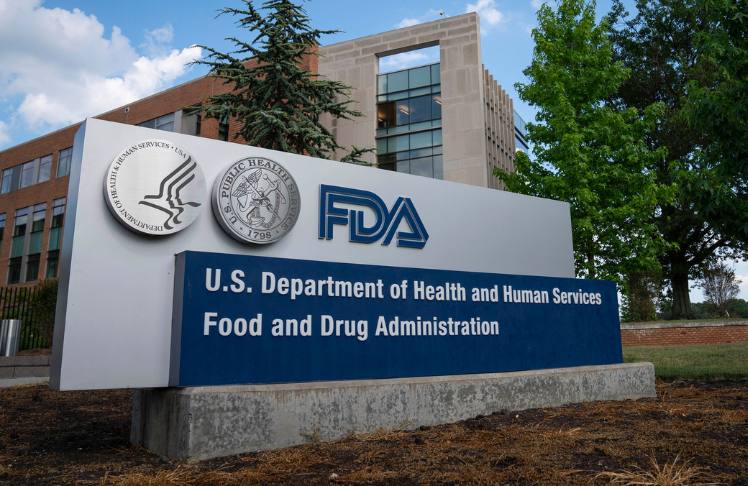
By Jamie Gumbrecht and Brenda Goodman, CNN
(CNN) — The US Food and Drug Administration wants to simplify the Covid-19 vaccine process to look more like what happens with the flu vaccine, according to documents posted online on Monday. That could include streamlining the vaccine composition, immunization schedules and periodic updates of Covid-19 vaccines.
The FDA said it expects to assess circulating strains of the coronavirus at least annually and decide in June which strains to select for the fall season, much like the process to update annual flu vaccines.
Moving forward, the agency said, most people may need only one dose of the latest Covid-19 shot to restore protection, regardless of how many shots they’ve gotten before. Two doses may be needed for people who are very young and haven’t been exposed, who are elderly or who have weakened immune systems, according to the FDA’s briefing document for its vaccine advisers.
The agency is urging a shift toward only one vaccine composition rather than a combination of monovalent vaccines — which are currently used for primary shots and target only one strain — and bivalent vaccines — which are currently used for booster doses and target more than one strain.
The FDA briefing documents do not say whether the annual shot would contain a single strain, two strains or more. The annual influenza vaccine immunizes against four strains.
“This simplification of vaccine composition should reduce complexity, decrease vaccine administration errors due to the complexity of the number of different vial presentations, and potentially increase vaccine compliance by allowing clearer communication,” the FDA said.
The agency’s independent vaccine advisers, the Vaccines and Related Biological Products Advisory Committee, are scheduled to meet Thursday to discuss the future of Covid-19 vaccine regimens and will be asked to vote on whether they recommend parts of the FDA’s plan.
Vaccine experts had mixed responses.
Dr. Gregory Poland of the Mayo Clinic, a former member of the FDA’s expert advisory panel, says the first thing it should do is outline what it expects annual vaccination to achieve.
“They’re going to have to decide what the goal of the use of current vaccines is,” said Poland, who studies how the body responds to vaccines. “If it’s to prevent severe disease and death, we’re already there.”
Before considering the move to annual boosters, he would want to see data on how effective the current updated boosters are against the latest Omicron subvariants.
“The data that keeps getting trotted out in regards to efficacy is prior to BQ and XBB subvariants,” Poland said.
The committee also needs to demand complete transparency from the FDA and drug manufacturers when weighing its decisions, he said. He was very concerned that the agency had not shared all the data it had on bivalent boosters with the advisory committee in June.
Dr. Peter Hotez, dean of the National School of Tropical Medicine at the Baylor College of Medicine, said he sees the plan for an annual update as a balance between what science says is needed to fight the virus and what’s actually practical.
“I think it’s a balance, trying to do what the science says, which is the need for adaptability and flexibility. Yet the practicality that’s unlikely the companies can probably make that switch more than once a year,” he said.
But this plan also has some weaknesses, he notes. Annual updates are fine as long as the virus continues to evolve incrementally, based on previously circulating viruses. But he questions whether the world has enough genomic surveillance to catch a radically different variant that pops out of left field, as Omicron did.
“We don’t have the surveillance mechanisms in place globally. We don’t have the genomic sequencing in place globally. We don’t have the carefully orchestrated dance that took decades to build for influenza surveillance in place for coronavirus surveillance,” Hotez said.
Dr. John Wherry, director of the Institute for Immunology at the University of Pennsylvania, has been studying how second-line immune defenders called T-cells are holding up against the coronavirus strains
The answer is that things are looking pretty good. Even though our antibody levels drop within about three months of a booster, our T-cells seem to be sticking around for longer — up to nine months so far — and they are thought to be the component of immunity that protects against severe outcomes like hospitalization and death.
Even though there doesn’t seem to be much measurable decline in T-cells over time, Wherry says, he’s supportive of the FDA’s plan for an annual Covid-19 vaccine.
“Recommending vaccines on a regular basis as part of your routine health care is something that we should be doing,” he said. “An annual boost with the vaccine will actually help make your T-cells more fit, keep them up to date and keep them in a position to protect us behind the antibodies.”
This means the boosters should offer some benefits in the short and long term.
The-CNN-Wire
™ & © 2023 Cable News Network, Inc., a Warner Bros. Discovery Company. All rights reserved.















